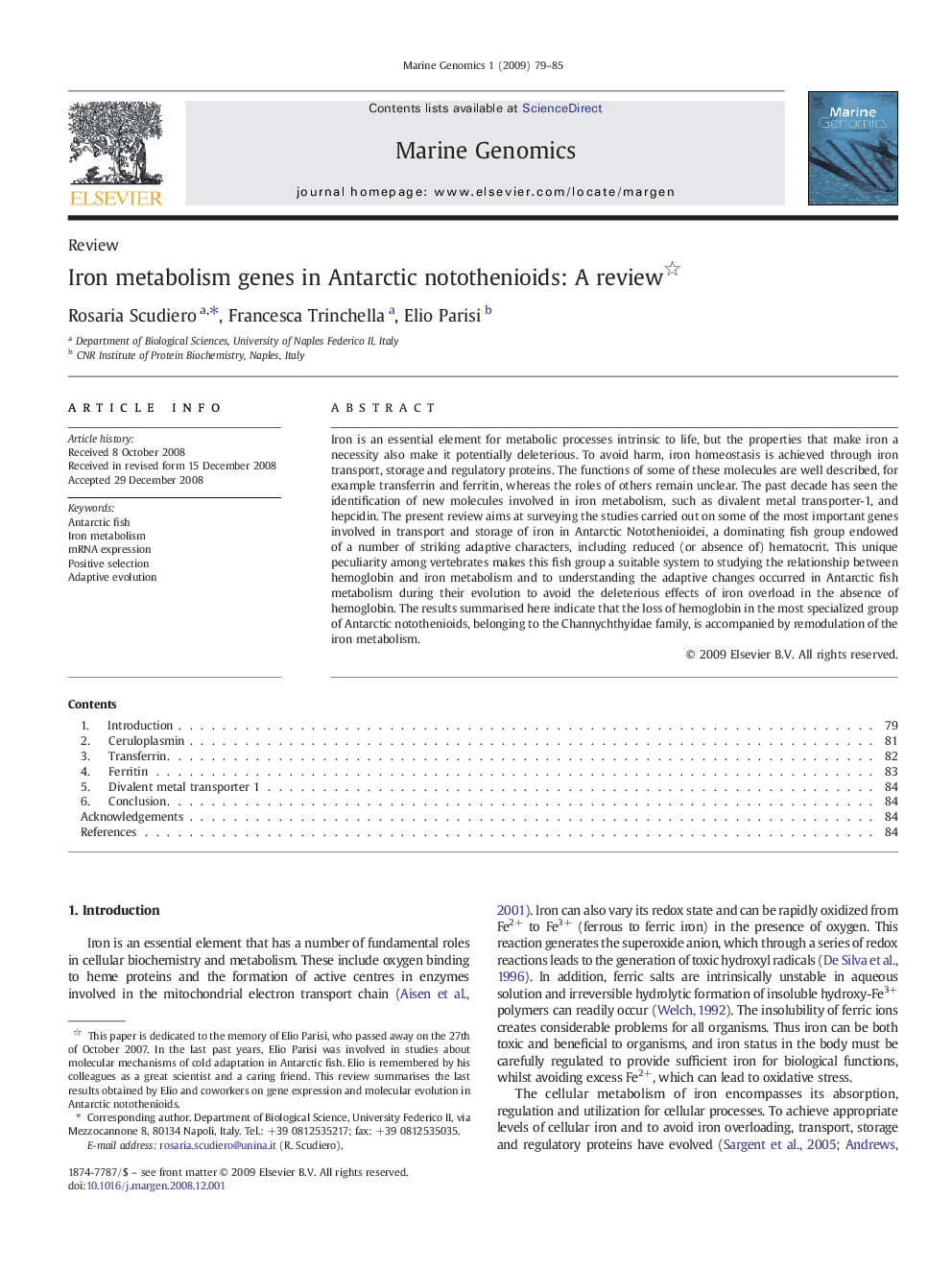| Article ID | Journal | Published Year | Pages | File Type |
|---|---|---|---|---|
| 2058346 | Marine Genomics | 2008 | 7 Pages |
Iron is an essential element for metabolic processes intrinsic to life, but the properties that make iron a necessity also make it potentially deleterious. To avoid harm, iron homeostasis is achieved through iron transport, storage and regulatory proteins. The functions of some of these molecules are well described, for example transferrin and ferritin, whereas the roles of others remain unclear. The past decade has seen the identification of new molecules involved in iron metabolism, such as divalent metal transporter-1, and hepcidin. The present review aims at surveying the studies carried out on some of the most important genes involved in transport and storage of iron in Antarctic Notothenioidei, a dominating fish group endowed of a number of striking adaptive characters, including reduced (or absence of) hematocrit. This unique peculiarity among vertebrates makes this fish group a suitable system to studying the relationship between hemoglobin and iron metabolism and to understanding the adaptive changes occurred in Antarctic fish metabolism during their evolution to avoid the deleterious effects of iron overload in the absence of hemoglobin. The results summarised here indicate that the loss of hemoglobin in the most specialized group of Antarctic notothenioids, belonging to the Channychthyidae family, is accompanied by remodulation of the iron metabolism.
